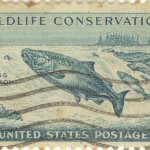 Forty years ago today Richard Nixon signed the Endangered Species Act into law. Overnight, the Act became one of this country’s most powerful environmental laws.
Forty years ago today Richard Nixon signed the Endangered Species Act into law. Overnight, the Act became one of this country’s most powerful environmental laws.
But before breaking out the champagne ask yourself how such a powerful tool can have such poor results? Only about 1 percent of species listed as “endangered” or “threatened” have been removed from the list and the price per species is high. The desert tortoise, for example, received $190 million in tax-dollar support from 1996 to 2009, without doing much for the tortoise.
The past 40 years have shown how good political intentions—or at least political maneuvering—in the name of environmental protection can create perverse economic incentives to do the opposite.
As the readers of this blog know, the discovery of federally listed species can result in the U.S. Fish and Wildlife Service designating private property as critical habitat and lock up private land. And you also know that rather than risk loss of economic value under the imposition of heavy-handed regulations, rational landowners, motivated by self-interest, will destroy both the rare critters and the critical habitats they need to live.
Despite this adverse arrangement, environmental entrepreneurs are still finding cause for celebration. Meet Hank Fischer and Kent Carter.
Hank Fischer was concerned about the gray wolf. It was on the endangered species list and extinct in the American West. Efforts to reintroduce it in the region had been unsuccessful, largely because the local population didn’t want hungry wolves killing their livestock. Rather than fight the ranchers in the region, Hank established a fund to compensate locals for losses and give them incentives to support the growth of the wolf population.Today, the gray wolf is no longer endangered. Watch more here.
More recently, Kent Carter invited scientists to search his family’s ranch in the Bay Area for signs of endangered plants and animals. When federally listed species were found, he recalled, “We had a celebration.” What? According to James Workman with Environmental Defense, Kent is figuring out how to get around the rigidity within the ESA. He is a master at using tools such as Habitat Conservation Plans, Conservation Banking Agreements, and Safe Harbor—all of which offer legal protections and incentives in the form of mitigation credits, similar to credits for conserving wetlands. When Kent improves riparian lands, for example, he can sell endangered steelhead credits. He then uses the cash earned from trade in habitat credits and reinvests into replenishing other landscapes for rare species.
For a more proactive approach, Todd Gartner with World Resources Institute is working on a pilot project with the Department of Defense to promote increased eastern gopher tortoise management on private lands to preclude the need to ever list the species. If the tortoise is officially listed it would mean a loss of public training areas for the army and red tape for private landowners and developers. This candidate species banking model, as outlined in a recent report from the Conservation Leadership Council, can be replicated in other regions dealing with candidate species such as the lesser prairie chicken and greater sage-grouse. Candidate conservation banking represents a system of positive incentives for environmental stewardship and could enhance species conservation by motivating more effective and less expensive habitat management.
The strategies Hank, Kent, Todd and other enviropreneurs are using today were laid out 40 years prior to the Endangered Species Act. The great conservationist Aldo Leopold pleaded with policy makers to experiment with many systems instead of “one-track laws” and claimed that “Conservation will ultimately boil down to rewarding the private landowner who conserves the public interest.”
If we want to do better than 1 percent we should keep the basic lessons of Leopold in mind and keep thinking beyond the regulatory box for biodiversity.

